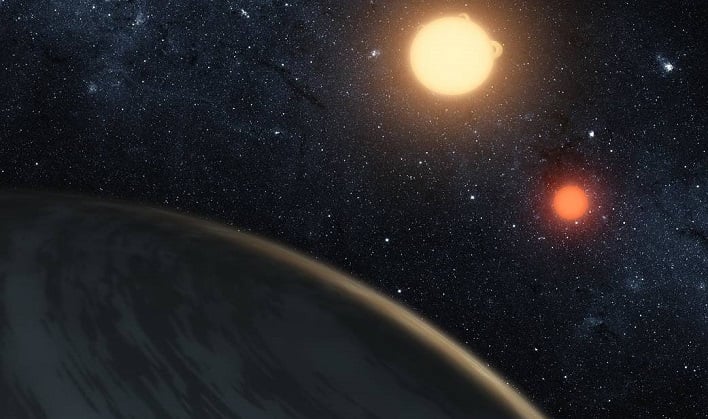Astronomers Find A Planet With Twin Suns Just Like Tatooine In Star Wars

A circumbinary system consists of at least one planet that orbits around two stars instead of just one. The planets that orbit these dual sun systems have been detected using a few different methods. For instance, TOI-1338b was discovered using the transit method as it passed in front of the brighter of the two stars it orbits. BEBOP-1c, on the other hand, was detected using the Doppler method, also known as the wobble-method, or radial-velocity method.

This led the team to begin studying the circumbinary system TOI-1338b resides in a different manner, namely the Doppler method. This method is the same that was used to detect the first exoplanet. The team utilized state-of-the-art instruments installed on two telescopes in the Atacama Desert in Chile. While the team was unable to measure the mass of the TOI-1338b using the method, they were able to detect BEBOP-1c, also known as TOI-1338.
"Only 12 circumbinary systems are known so far, and this is only the second that hosts more than one planet," explained David Martin, an astronomer at the Ohio State University.
BEBOP-1c has an orbital period of 215 days, and a mass 65 times larger than Earth, according to Dr. Standing. He says it was difficult to confirm the second planet due to the COVID pandemic when telescopes in Chile were shut down for six months just as the team reached a critical point in its research of the planet's orbit. However, Dr. Standing and the rest of the team were finally able to observe that part of BEBOP-1c's orbital path last year and finalized the detection. The newly found planet was named after the project that collected the data, or Binaries Escorted By Orbiting Planets.
"In the case of circumbinary geometries, the disc surrounds both stars. As both stars orbit one another, they act like a giant paddle that disturbs the disc close to them and prevents planet formation except for in regions that are quiet and far away from the binary," explains Dr. Lalitha Sairam, a researcher at the University of Birmingham and second author of the new study. "It is easier to pinpoint the location and conditions of planet formation in circumbinary systems compared to single stars like the Sun."
As of right now, the team is unable to determine the size of BEBOP-1c, but will continue to use the transit method to try and determine its mass. In terms of fellow planet TOI-1338b, the team was able to place strict upper limits on its mass. It is said to have a density lower than a "Victoria Sponge cake," which is rare and makes the planet optimal for further studies with the James Webb Space Telescope.

